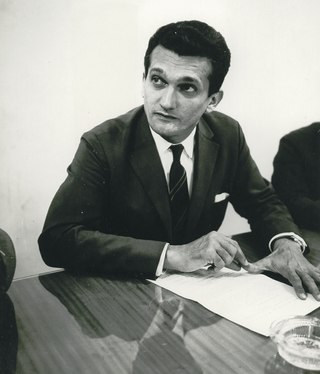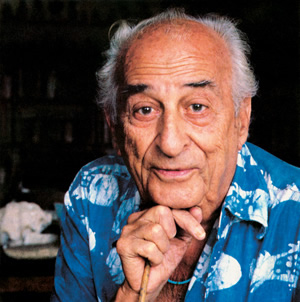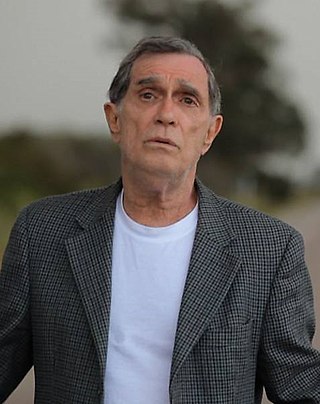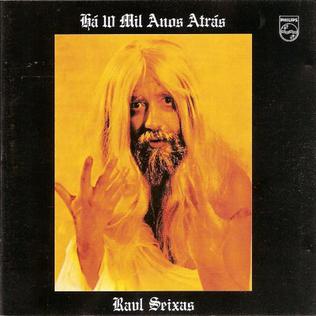
Agenor de Miranda Araújo Neto, better known as Cazuza, was a Brazilian singer and songwriter, born in Rio de Janeiro. Along with Raul Seixas, Renato Russo and Os Mutantes, Cazuza, both while fronting Barão Vermelho and at solo career, is considered one of the best exponents of Brazilian rock music. In his 9-year career, he sold more than 5 million albums and achieved 11 number one singles and 18 Top 10 singles in Brazil.

Celso Monteiro Furtado was a Brazilian economist and one of the most distinguished intellectuals of the 20th century. His work focuses on development and underdevelopment and on the persistence of poverty in peripheral countries throughout the world. He is viewed, along with Raúl Prebisch, as one of the main formulators of economic structuralism, an economics school that is largely identified with CEPAL, which achieved prominence in Latin America and other developing regions during the 1960s and 1970s and sought to stimulate economic development through governmental intervention, largely inspired on the views of John Maynard Keynes. As a politician, Furtado was appointed Minister of Planning and Minister of Culture.

Claudio Júlio Tognolli was a Brazilian journalist, musician and writer. He was a professor of journalism at the School of Communications and Arts of the University of São Paulo and a board member at the Associação Brasileira de Jornalismo Investigativo.

Zé Ramalho is a Brazilian composer and performer. Zé Ramalho has collaborated with various major Brazilian musicians, including Vanusa, Geraldo Azevedo and Alceu Valença.

Jesus não Tem Dentes no País dos Banguelas is the fourth studio album by Brazilian rock band Titãs, released on November 23, 1987. Like its predecessor Cabeça Dinossauro, it was produced by Liminha and featured electronic music experimentations and funk rock influences, besides tackling social issues in its lyrics. Its recording took place at Nas Nuvens studio in Rio de Janeiro and lasted for little more than two months.

Héctor Julio Páride Bernabó was an Argentine-Brazilian artist, researcher, writer, historian and journalist. His nickname and artistic name, Carybé, a type of piranha, comes from his time in the scouts. He died of heart failure after the meeting of a candomblé community's lay board of directors, the Cruz Santa Opô Afonjá Society, of which he was a member.

Nando Reis is a Brazilian musician and producer, best known as the former bassist and one of the lead singers of Brazilian rock band Titãs and for his successful solo career, with his own band called Os Infernais. He has also produced a few albums, including some related to Cássia Eller, who has made several significant partnerships with him, and Marisa Monte. In 2012, Nando Reis was listed among the top ten Brazilian artists at the ECAD list of artists who earned the most from copyright in the first semester of that year. In 2016, he was at the 15th position, besides being 6th in the ranking of earnings from live performances and topped the ranking of earnings from music played in public places.

Placar is a monthly Brazilian sports magazine. Its first edition was issued by Editora Abril. on March 20, 1970, and since then it has become the most successful sports publication in Brazil, even though it focuses fully on football. It is currently published by Editora Abril.
A Bolha is a Brazilian rock (music) band that formed in 1965 as The Bubbles.

Henrique George Mautner, better known by his stage name Jorge Mautner, is a Brazilian singer-songwriter, lyricist, violinist, actor, screenwriter, film director and poet, considered to be a pioneer of the MPB scene and of the Tropicalista movement.

Lélia Abramo was an Italian-Brazilian actress and political activist.

Krig-ha, Bandolo! is the first solo album by the Brazilian singer Raul Seixas. It was released in 1973.

Há 10 Mil Anos Atrás is the fourth studio solo album by the Brazilian singer Raul Seixas. It was released in 1976.

Olavo Luiz Pimentel de Carvalho was a Brazilian self-proclaimed philosopher, political pundit, former astrologer, journalist, and far-right conspiracy theorist.

The São Paulo Prize for Literature is a Brazilian literary prize for novels written in the Portuguese language and published in Brazil. It was established in 2008 by the Secretary of Culture for the State of São Paulo. Though not as old as other literary prizes in Brazil, such as the Machado de Assis Prize, the São Paulo Prize has quickly risen in prestige. For example, in 2011, there were 221 submissions for the prize. This rapid rise in popularity is partly because of the large cash prize. Every year two prizes of R$200,000 each are awarded—one for the best novel of the year by an established author, and the other for the best novel of the year by a debut author—making the São Paulo Prize the largest prize for a published work in Brazil, and one of the largest literary prizes in the world. Ten finalists are listed for each award, during the Festival da Mantiqueira, and the winners are announced on the first Monday of August in the Museum of the Portuguese Language.

Cristóvão Tezza is a Brazilian novelist and university professor.
"Ouro de Tolo" is a song by the Brazilian singer and composer Raul Seixas from his first solo album, Krig-ha, Bandolo! (1973). In 2009, it was chosen by Rolling Stone Brasil as the 16th best Brazilian song.

Paulo Coelho's Best Story is a 2014 Brazilian-Spanish biographical drama film about the Brazilian lyricist and novelist Paulo Coelho. Directed by Daniel Augusto, it stars Júlio Andrade, Ravel Andrade, Fabíula Nascimento, Fabiana Guglielmetti and Lucci Ferreira.
Raimar Richers was one of the founding professors at Escola de Administração de Empresas de São Paulo, business consultant and Brazilian amateur photographer. He was one of the first specialists in marketing in Brazil and wrote several books on that subject and others.

Miguel Maria de Serpa Lopes was a Brazilian jurist, university professor, and appellate court judge, known for his work on civil law. He was president of the Regional Electoral Court of the Federal District and the Court of Justice of the Federal District, at the time when Rio de Janeiro was the Federal capital of Brazil. His legal decisions and publications are still widely cited.


















